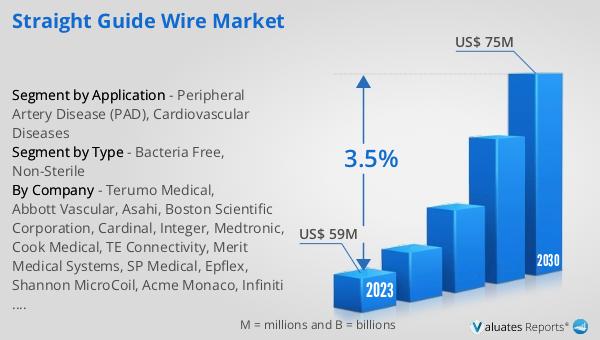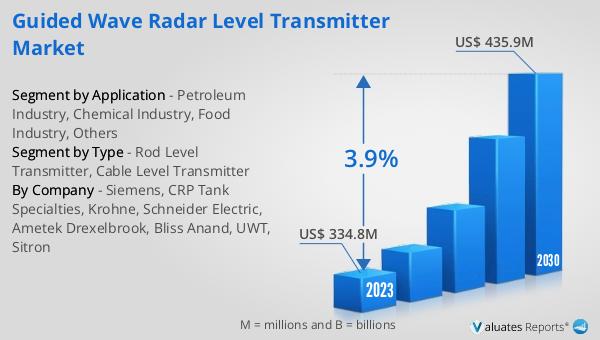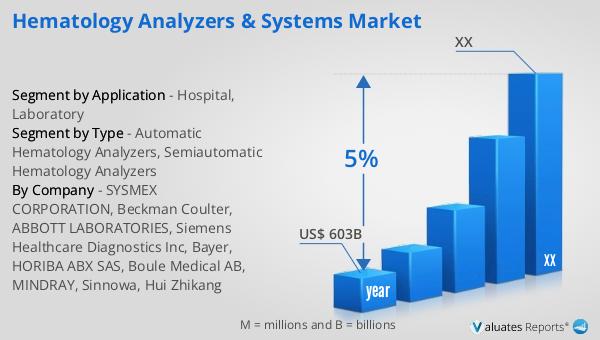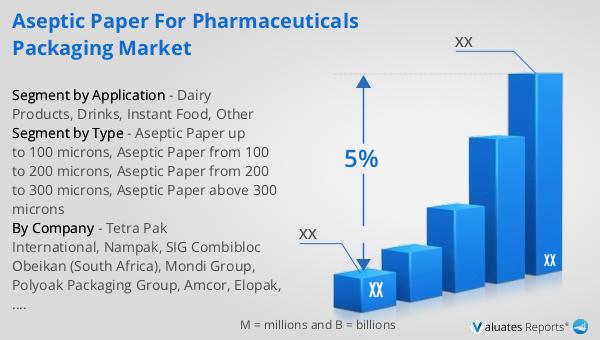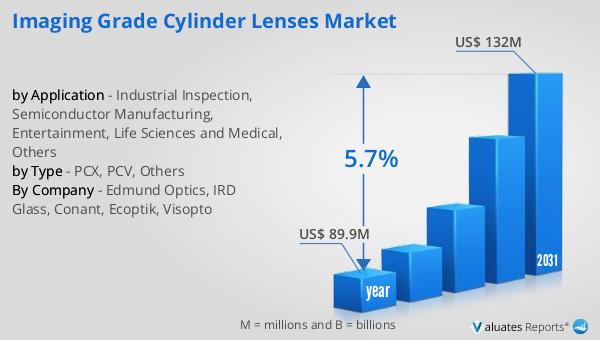What is Global Guided Wave Radar Transmitter Market?
The Global Guided Wave Radar Transmitter Market is a specialized segment within the broader radar technology industry. Guided wave radar transmitters are advanced instruments used for measuring the level of liquids, solids, and interfaces in various industrial applications. These devices operate by sending microwave pulses down a probe, which then reflects back to the transmitter when it encounters a material surface. The time it takes for the pulse to return is used to calculate the level of the material. This technology is highly accurate, reliable, and unaffected by changes in temperature, pressure, or density, making it ideal for challenging environments. The market for these transmitters is driven by the need for precise level measurement in industries such as oil and gas, chemicals, food and beverages, and water treatment. As industries continue to seek more efficient and reliable measurement solutions, the demand for guided wave radar transmitters is expected to grow.
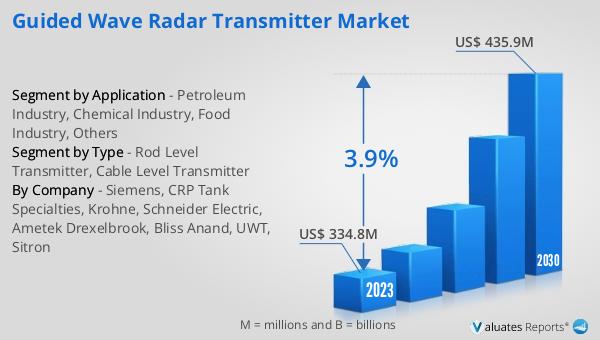
Rod Level Transmitter, Cable Level Transmitter in the Global Guided Wave Radar Transmitter Market:
Rod level transmitters and cable level transmitters are two primary types of guided wave radar transmitters used in various industrial applications. Rod level transmitters use a solid rod as the probe, which is ideal for measuring the level of liquids and solids in tanks and vessels. These transmitters are particularly useful in applications where the material being measured has a low dielectric constant, as the solid rod provides a strong reflection signal. Rod level transmitters are commonly used in the petroleum and chemical industries, where they provide accurate and reliable measurements in harsh environments. On the other hand, cable level transmitters use a flexible cable as the probe, which makes them suitable for measuring the level of materials in tall or narrow vessels. The cable can be easily installed and adjusted to fit the specific requirements of the application. Cable level transmitters are often used in the food and beverage industry, where they provide precise measurements of liquids and solids in storage tanks and processing vessels. Both rod and cable level transmitters offer several advantages, including high accuracy, reliability, and ease of installation. They are also unaffected by changes in temperature, pressure, or density, making them ideal for use in challenging environments. Additionally, these transmitters can be used in a wide range of applications, from measuring the level of liquids in storage tanks to monitoring the level of solids in silos and hoppers. The choice between rod and cable level transmitters depends on the specific requirements of the application, including the type of material being measured, the size and shape of the vessel, and the environmental conditions. In summary, rod and cable level transmitters are essential tools for accurate and reliable level measurement in various industrial applications. Their versatility, high performance, and ability to operate in challenging environments make them a valuable asset for industries seeking efficient and reliable measurement solutions.
Petroleum Industry, Chemical Industry, Food Industry, Others in the Global Guided Wave Radar Transmitter Market:
The Global Guided Wave Radar Transmitter Market finds extensive usage in various industries, including the petroleum, chemical, and food industries, among others. In the petroleum industry, guided wave radar transmitters are used to measure the level of crude oil, refined products, and other liquids in storage tanks and pipelines. These transmitters provide accurate and reliable measurements, even in harsh environments with high temperatures and pressures. They are also used to monitor the level of oil and gas in offshore platforms and refineries, ensuring safe and efficient operations. In the chemical industry, guided wave radar transmitters are used to measure the level of various chemicals and liquids in storage tanks, reactors, and process vessels. These transmitters are highly accurate and reliable, making them ideal for use in applications where precise level measurement is critical. They are also resistant to corrosion and chemical attack, ensuring long-term performance in aggressive environments. In the food industry, guided wave radar transmitters are used to measure the level of liquids, solids, and powders in storage tanks, silos, and processing vessels. These transmitters provide accurate and reliable measurements, ensuring consistent product quality and efficient operations. They are also easy to clean and maintain, making them suitable for use in hygienic environments. Other industries that use guided wave radar transmitters include water and wastewater treatment, pharmaceuticals, and power generation. In water and wastewater treatment, these transmitters are used to measure the level of water, sludge, and other liquids in tanks and reservoirs. They provide accurate and reliable measurements, ensuring efficient treatment processes and compliance with regulatory requirements. In the pharmaceutical industry, guided wave radar transmitters are used to measure the level of liquids and powders in storage tanks and process vessels. They provide precise measurements, ensuring consistent product quality and efficient operations. In power generation, these transmitters are used to measure the level of water, steam, and other fluids in boilers and cooling towers. They provide accurate and reliable measurements, ensuring safe and efficient operations. In summary, the Global Guided Wave Radar Transmitter Market plays a crucial role in various industries, providing accurate and reliable level measurement solutions that enhance operational efficiency and safety.
Global Guided Wave Radar Transmitter Market Outlook:
The global Guided Wave Radar Transmitter market was valued at US$ 334.8 million in 2023 and is anticipated to reach US$ 435.9 million by 2030, witnessing a CAGR of 3.9% during the forecast period 2024-2030. This market outlook indicates a steady growth trajectory for guided wave radar transmitters, driven by increasing demand for accurate and reliable level measurement solutions across various industries. The petroleum, chemical, and food industries, among others, are expected to contribute significantly to this growth, as they continue to seek advanced measurement technologies to enhance operational efficiency and safety. The market's growth is also supported by technological advancements in radar technology, which have led to the development of more sophisticated and reliable transmitters. As industries continue to prioritize precision and reliability in their measurement processes, the demand for guided wave radar transmitters is expected to rise, driving the market's growth over the forecast period.
| Report Metric | Details |
| Report Name | Guided Wave Radar Transmitter Market |
| Accounted market size in 2023 | US$ 334.8 million |
| Forecasted market size in 2030 | US$ 435.9 million |
| CAGR | 3.9% |
| Base Year | 2023 |
| Forecasted years | 2024 - 2030 |
| Segment by Type |
|
| Segment by Application |
|
| Production by Region |
|
| Consumption by Region |
|
| By Company | Siemens, CRP Tank Specialties, Krohne, Schneider Electric, Ametek Drexelbrook, Bliss Anand, UWT, Sitron |
| Forecast units | USD million in value |
| Report coverage | Revenue and volume forecast, company share, competitive landscape, growth factors and trends |
